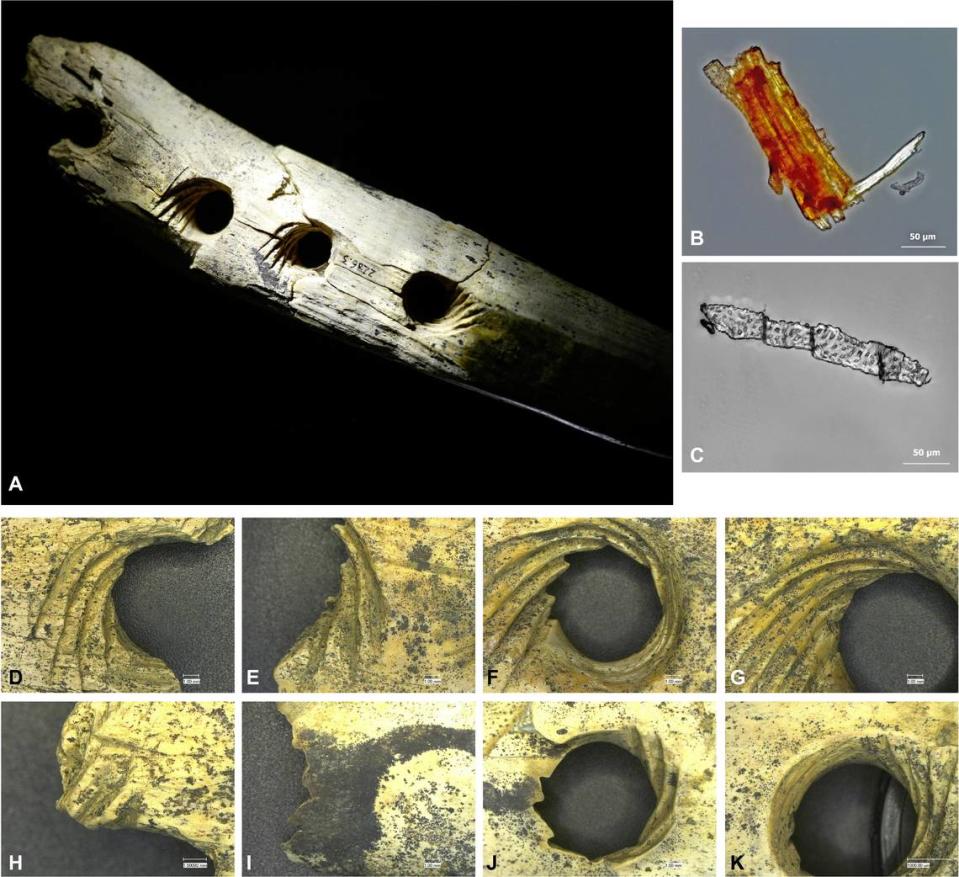Prehistoric ivory ‘baton’ puzzled experts for years. A new study might have answers
- Oops!Something went wrong.Please try again later.
Sometimes archaeologists dig up easily recognizable objects, like plates or bowls or coins. Other times, they uncover much more unusual and ambiguous finds.
Years ago, archaeologists in Germany unearthed one such puzzling artifact. Now, researchers think they’ve solved the mystery.
Archaeologists found the mysterious artifact while excavating Hohle Fels Cave in 2015, according to a study published Jan. 31 in the journal Science Advances. The prehistoric item was made from a mammoth’s tusk and broken into about 15 fragments.
Pieced back together, the fragments formed “a well-preserved and nearly complete perforated baton, with four holes containing precisely carved spiral grooves,” researchers said. Photos show this roughly 8-inch-long ivory “baton.”
The “baton” was made by the Aurignacian culture at least 35,000 years old and was still sharp, the study said.
Archaeologists also found several similar batons decades ago, but the purpose of these carved sticks remained poorly understood.
“Many interpretations have viewed these finds as symbols of power, ritual objects that are sometimes associated with burials or artworks of various kinds,” the study said.
But researchers had a different idea.
“We suspected that the holes with spiral grooves were made to have something fed through them,” the study said, “which led us to hypothesize that the artifact may have served to align fibers to make rope or twine.”

To test their idea, researchers tried two approaches. First, they studied the residue left on the baton and found traces of “plant fibers.”
Next, researchers built a replica baton and tried using it to make rope, the study said.
After trial and error, researchers discovered that the replica baton “works very, very well for making rope,” the study’s lead co-author Nicholas Conard told the Canadian Broadcasting Corporation. “You can make about 5 meters (16 feet) of rope in about 10 minutes after you get used to using the system.”
The replica tool worked best by feeding “bundles of cattail leaves through the holes” then pulling the baton along, the study said. “Behind the tool, the strands combine automatically into a rope as a result of their twisting tension.”
Based on these tests, researchers identified the “baton” as a rope-making tool specifically used for “making thicker, stronger rope consisting of two to four strands.”
Experts generally believe that prehistoric cultures used rope and twine, but archaeological evidence of this is “rare,” the study said.
The rope-making “baton” found at Hohle Fels Cave offers one way that the Aurignacian culture manufactured such an essential material, researchers said.
Hohle Fels Cave is in southern Germany and about 340 miles southwest of Berlin.
The research team included Conard and Veerle Rots.
Mysterious ruins found hidden in courtyard of 500-year-old castle in Norway. See them
‘Incredibly rare’ ancient Roman bed uncovered in London. See the ‘extraordinary’ find
‘Ancient arcade’ — with a familiar game — found in Kenya, archaeologist says. See it

